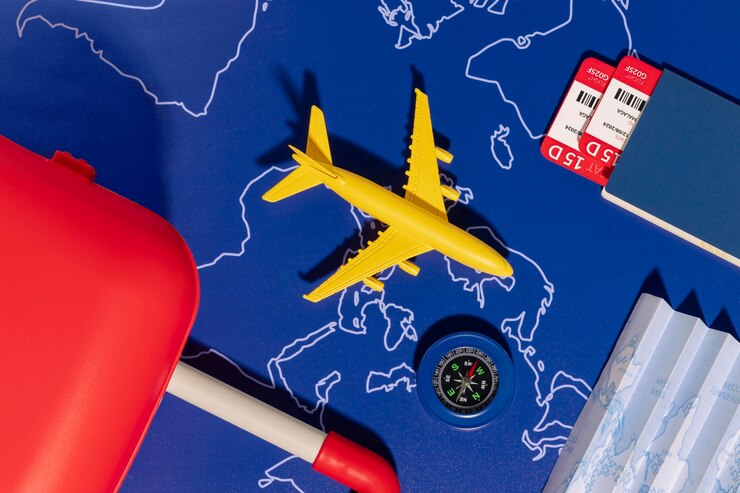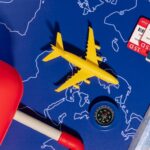Travel to Canada as a destination for business, education, immigration, or tourism. Traveling by plane toTravel to Canada is a thrilling experience, but it also involves an organized process that calls for preparation, documentation, and planning. This all-inclusive guide will walk you through every step of the air travel process to Travel to Canada, from arranging your travel to reaching your ultimate destination.
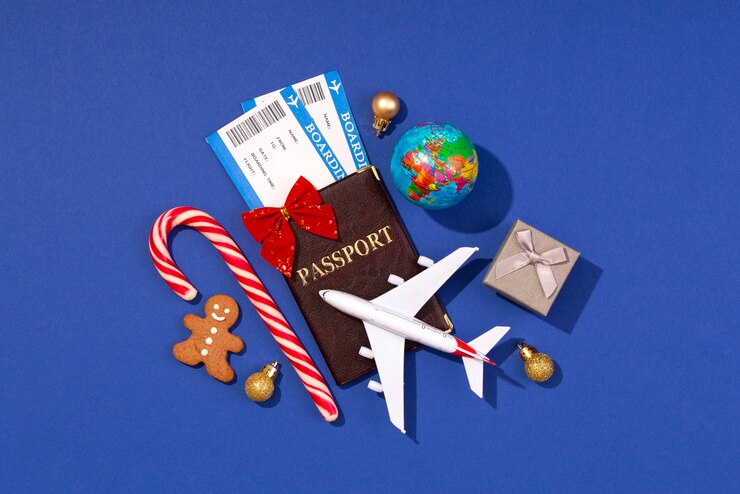
Situated just across the Canadian border are some of the most breathtaking natural vistas and amazing cities on Earth. In addition to providing a brief discussion of several of the things, this two-minute video also provides an overview of the process.
Getting Ready:
- Leave-taking
- Admission
- In Canada
- Overtakes
- Go back
Getting Ready for Your Journey:
The commanding pilot needs to have a current:
- The passport
- Pilot’s certificate with an endorsement for fluency in English
- medical certification (recognized only with BasicMed)
- Permit for restricted radiotelephone operators. Click here to learn more about FCC requirements.
- Travelers
- Every traveler needs to have a valid passport.
- A notarized document of consent from the absent parent specifying the dates of the trip is required for children traveling with just one parent.
Aircraft:
Every aircraft registered in the US needs to have:
- an active certificate of airworthiness. If you require an Experimental Special Airworthiness Certificate, download, print, and carry this form by clicking here.
- Refer to the requirements found under the “Departure” page for production aircraft that have an experimental airworthiness certificate.
- It is advisable to include a notarized document granting permission to use the aircraft in Canada if it is registered under the name of another individual or company.
- A data plate with an ID
- If you’re entering Travel to Canada through an ADIZ, you must use 12-inch registration marks (mostly impacts those flying in from Alaska)
- Transponder with Mode C: For any foreign flight involving an aircraft without a transponder, TSA clearances are still needed.
- A 406 MHz or 121.5 MHz ELT, respectively
- U.S. and Canadian charts are required.
Check your insurance policy before flying into Canada. Liability insurance is required for private aircraft. It is required to have proof of liability coverage when traveling. AOPA members are covered by AssuredPartners Aerospace. For additional information, send an email to FDK.insurance@AP-Aerospace.com or call 800/622-AOPA(2672) to AssuredPartners Aerospace.
As indicated below, the coverage kinds and amounts depend on the aircraft’s gross takeoff weight. All sums are expressed in Canadian dollars.
Purchasing a Ticket:
Booking your trip is the first step in the air Travel to Canada procedure. Here are important things to think about:
Examine Airlines and Flights:
Many international airlines, including British Airways, Lufthansa, Emirates, Air Travel to Canada, WestJet, and many more, serve Travel to Canada. When looking at flights, take into account things like:Examine safety records, reviews, and customer service ratings to learn about an airline’s reputation.
Flight duration: Although they are typically more expensive, direct flights may be preferred. While they might cut costs, layovers lengthen travel times.
Baggage allowance: Check the airline’s policy carefully as overweight or extra baggage may result in additional charges.
Cost: Evaluate prices from several airlines and online travel agencies such as Skyscanner, Kayak, and Google Flights.
Online reservation systems:
Bookings can be made directly on the airline’s website or through third-party sites. While there may be discounts available on third-party websites, making a direct airline reservation gives you more flexibility about modifications and cancellations.
Class of Flight:
- Based on your money and level of comfort, choose the flight class. Typical options consist of:
- Economy Class: The least expensive, but it offers simple seating and amenities.
- Better meals and more room are available in the premium economy.
- Business Class: Offers enhanced meals, lie-flat seats, and lounge access at airports.
- First Class: The ultimate in opulence, featuring gourmet meals and private suites.
Getting Your Travel Records Ready:
Depending on the purpose and length of your visit, specific papers may be required for air Travel to Canada. What you’ll need is as follows:
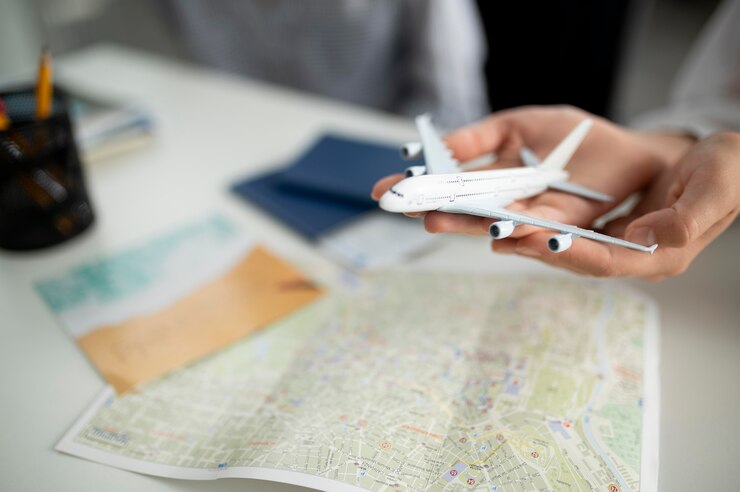
Passport: To enter Canada, one must have a current passport. Make sure your passport expires no less than six months before your intended departure date. If a passport is too near to expire, many airlines won’t let you board.
Electronic travel authorization (eTA) or a visa:
To enter Travel to Canada, you will require an Electronic Travel Authorization (eTA) or a visa, depending on your nationality. This is an explanation:
Visa: Prior to Travel to Canada, nationals of a few nations, including China, India, and Pakistan, must get a visa. Apply through the Canadian Embassy or Consulate that is closest to you, and be ready to submit the necessary paperwork, including travel itinerary, financial statements, and, if necessary, an invitation letter.
eTA: Passengers from nations that do not require a visa, such as the United States, the United Kingdom, Australia, and the majority of EU countries, must apply online for an eTA. It only takes a few minutes to complete the process, but in case there are any delays, it is best to apply at least one week in advance of your departure.
Travel Requirements for COVID-19:
Verify the most recent COVID-19 requirements before boarding, since they can need immunization documentation or a negative test result. Travel advisories are subject to change, so visit the official websites of the Canadian government to stay informed.
Extra Records:
- Evidence of funds: You might have to provide evidence that you have enough money to cover your expenses while there.
- Return or forward ticket: You could occasionally be required to present proof of your return or forward ticket.
- Letter of invitation: Having a letter of invitation can make the immigration procedure easier if you’re visiting friends or family.
Getting Ready and Packing for Your Trip:
When packing for a trip, give it some thought. Here’s a strategy to guarantee a seamless trip:
Needed Things:
- Travel documents: Visa or eTA, passport, and any further paperwork that may be required.
- Travel insurance: Having travel insurance that covers medical emergencies, vacation delays, or cancellations is strongly advised.
- medication: Make sure your prescription medication is packed in your carry-on bag and, if required, accompanied by a doctor’s note.
Considerations for Baggage:
Checked baggage: On international flights, airlines typically permit a minimum of one piece of checked baggage, though the weight restriction varies. For information, inquire with your airline.
One piece of hand luggage and one personal item, such as a laptop or handbag, are typically included with carry-on luggage. Verify that the dimensions of your carry-on comply with the airline’s guidelines.
Things Not to Bring It is prohibited to bring some goods on Travel to Canada, including sharp objects, certain foods, and liquids larger than 100 milliliters in carry-on luggage. Examine the list of items that your airline prohibits before packing.
Pre-boarding procedures at the airport:
It’s essential to get to the airport early and complete the required paperwork in order to guarantee you don’t miss your flight.
Finding Your Way to the Airport:
If you are Travel to Canada from abroad, arrive at least three hours early. This allows you more time for security checks, check-in, and any unforeseen delays.
Registering:
You have two options for checking in: using online check-in services to select your seats and print your boarding pass in advance, or using the counter at the airport. Additionally, some businesses provide self-check-in kiosks at airports.
Immigration and Security:
Once you’ve checked in, proceed straight to security. Make sure your electronics are fully charged because you might have to switch them on for the security check. After passing security, proceed to immigration (if required), where you will need to present your boarding pass, passport, and visa or eTA.
Getting on the Aircraft:
Boarding typically starts 30 to 60 minutes prior to departure. When your group is called, pay attention to the announcements and board.
The Experience of Flying:
There are Travel to Canada from all around the world that take anywhere from a few hours to more than twenty. The secret to a fun ride is to get comfy.
Onboard Amenities:
In addition to food and in-flight entertainment, most long-haul international flights provide comforts like pillows and blankets. Meals, however, might not be covered by the ticket price if you’re traveling on a budget airline.
Maintaining Your Comfort:
Hydrate: To prevent dehydration throughout the flight, sip lots of water.
Get moving: Prolonged travel may cause pain or even DVT, or deep vein thrombosis. Every now and then try getting up to stretch your legs.
Entertainment: To kill time, bring a book, download series or movies, or turn on some music.
Reaching Canada:
You will go through a few last procedures upon arriving in Travel to Canada before being able to enter the nation formally.
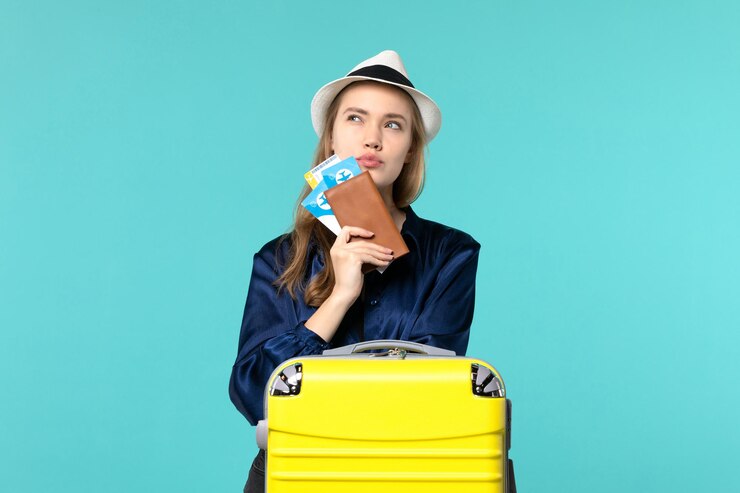
The immigration procedure is efficiently run by Immigration and Customs Travel to Canada. Proceed towards the immigration desks by following the instructions. Here, you will have to show your passport, visa, or eTA, and provide an explanation for your visit.
The Customs Declaration:
Once you pass immigration, you will proceed to customs. You have to declare anything you’re carrying that costs more than CAD 10,000, including food, drink, or cash.
Claiming Baggage:
Take your checked luggage off the designated carousel. Inform the baggage service counter of the airline right away if your bags are delayed or misplaced.
Last-Minute Security Verification:
After baggage claim, some airports have one last security checkpoint where you can be required to undergo additional screening.
Reaching Your Ultimate Goal:
It’s time to get to your final destination in Travel to Canada after clearing customs and getting your bags.
Transportation on Foot:
- Taxis from the airport: The majority of Canadian airports provide direct transportation to your hotel or home.
- Ridesharing: Major Canadian airports provide ridesharing applications such as Uber and Lyft.
- Public transportation: Buses and railroads connect many airports to the city, making this a more cost-effective choice.
- Rental cars: Canadian airports offer convenient rental vehicle options if you’d rather drive.
Travel Within the Country:
You may have to take a domestic flight if your final destination is not the location where you landed. Make sure you allow enough time to clear immigration and customs between your international and domestic flights.
Advice for a Stress-Free Journey:
Try these useful suggestions to make sure your trip to Travel to Canada goes smoothly:
- Remain informed: Constantly look out for any changes to the gate or any delays in flights.
- Maintain organization: Organize all of your travel documents in one convenient location.
- Be ready for variable weather: Depending on the season and location, Canada’s weather can change significantly. Make appropriate packing.
- Become knowledgeable with Canadian laws: Recognize the laws, particularly those pertaining to Canadian substances, goods, and conduct that are forbidden.
In summary:
There are various phases involved in Travel to Canada by air: planning your trip, obtaining the required paperwork, clearing customs at the airport, and finally landing in the nation. You’ll be well-prepared for an easy and stress-free trip to Canada if you adhere to this recommendations. Cheers to your journey and welcome to one of the world’s most stunning and distinctive nations.
